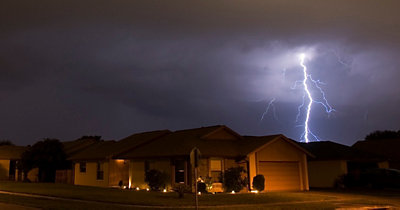How Does a Surge Protector Work?

Surge protectors are specially designed to protect electronics against power surges. You likely already have one in your home or office protecting a number of your favorite electronic devices. But do you really know exactly how a surge protector works?
The experts at Plumbline Services are here to explain what surge protectors are, how they work, and why you should have more than one in your home.
Why Do You Need a Surge Protector?
Obviously, if you own expensive electronic devices, you want to protect them at all costs. The good news is that surge protectors are specifically designed to protect electronics and appliances from power surges.
A power surge, otherwise known as a transient voltage, occurs when the voltage (the measuring unit of electricity) in your house’s electricity flow exceeds the recommended level. For example, the standard voltage in American households and offices is 120 volts. The moment the number of volts increases past 120, surge protectors kick in.
Voltage spikes are commonly caused by lightning, when the motors of large appliances turn on and off, and when electric utility companies perform power grid switching. If too much voltage runs through the electrical wiring in your devices, it can cause them to burst, essentially rendering them useless. Sometimes wires don’t burst right away after a power surge but are still seriously damaged. After that, it’s only a matter of time until they break.
How Does a Surge Protector Work?
When surges happen, a surge protector detects the additional voltage and safely diverts it to an outlet’s grounding wire. A component called a metal oxide varistor, or MOV, is responsible for connecting the hot power line to the grounding line. A gas discharge arrestor, or gas tube, is another commonly used device in surge protection.
These elements inside surge protectors keep your devices working during surges while they redirect excess and dangerous energy away from wires and hardware. Learn more about the electrical components in a surge protector here.
What Kind of Surge Protector is Recommended for your Home?
Three types of surge protectors are essential for protecting your home or office. That may seem like overkill, but, unfortunately, one surge protector can’t save your house from all of the surges it will experience. Using all three types will protect your technology from every surge, no matter what type it is.
- Your first surge protector should be placed between the power lines of your street and your meter. It will protect all of the wiring in your house from lightning strikes and electric utility companies performing power grid switching. Installing this protector will be managed by your power company.
- The second will go between your meter and breaker box. These protect your equipment from the type of surges that occur when electric utility companies perform power grid switching or if lightning were to strike these pieces of equipment.
- Finally, the third kind of surge protectors are the ones that are installed at every wall outlet where you plug in appliances. This will ensure that neither lightning or motors turning on and off will cause surges that harm any piece of your precious technology.
Following this three-step system ensures you and your home or office will be fully protected.
Need help from a Colorado Plumbing, Heating, Cooling, or Electrical Specialist?
For your convenience, you can request an appointment in one of two ways:
- Call us at (303) 436-2525 for immediate assistance.
- Click on the button below to schedule your appointment online.
Related Reading
Join Our Email Newsletter
Receive updates, current news, promotions, and industry tips.
